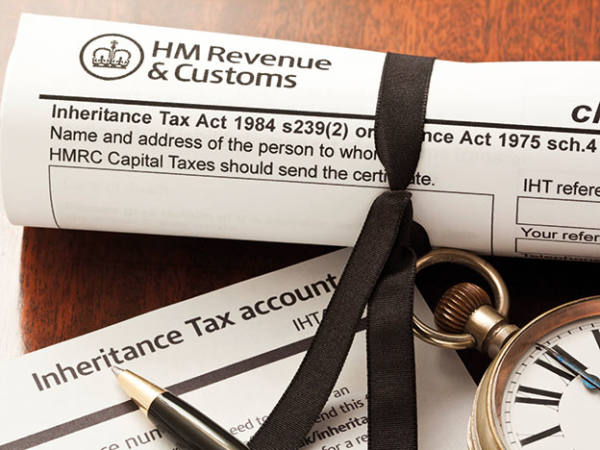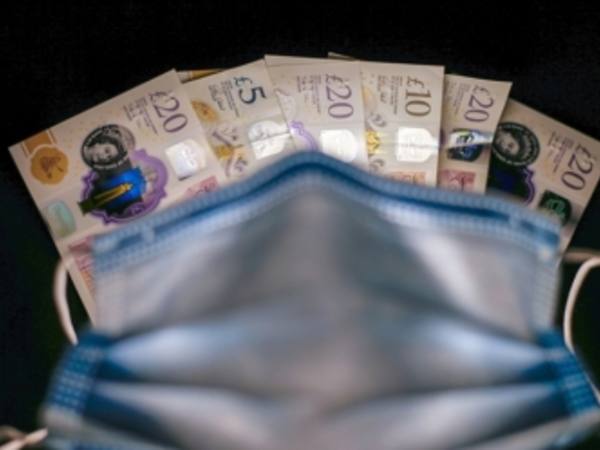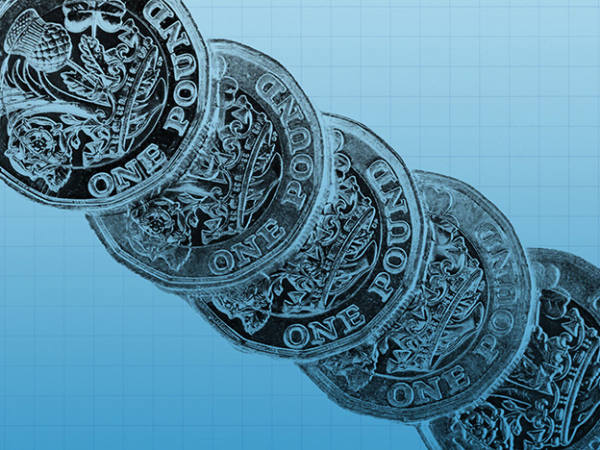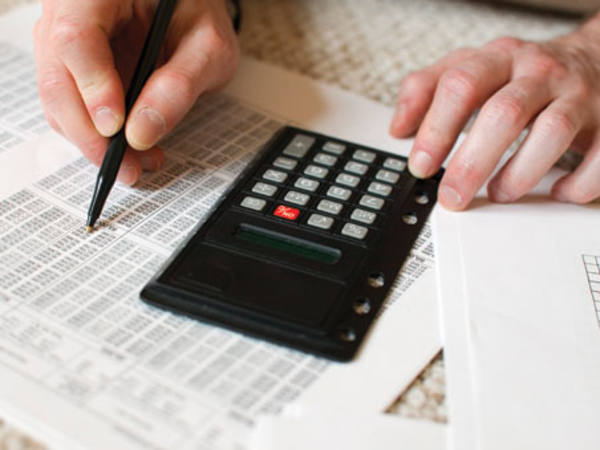- Most modern workplace and personal pensions don't fall into your estate for IHT purposes
- Some older style pensions may be liable to IHT if you pass them onto beneficiaries
- There are things you can do to take them out of your estate
If you save money into workplace or personal pensions such as a self invested personal pension (Sipp), you can pass these pots on to beneficiaries after you die free of inheritance tax (IHT), making them a good way to pass on wealth if you do not need the assets within them to fund your retirement. But there are some instances where pensions are not free of IHT.
A key determinant of whether pensions fall into your estate is how the beneficiaries – the people to whom a lump sum payment or death in service is passed onto after your death – are selected. This is the case for both defined-benefit (DB) and defined-contribution (DC) pensions. To be IHT free, the pension's beneficiaries should be selected on a discretionary basis by the scheme administrator or trustee, and it should pay out the proceeds paid out within two years of being notified of the death. This is usually the arrangement with most modern pensions. But nominations which confer a contractual right to a payment to a named person are usually part of your taxable estate.
With certain types of pensions, such as Section 32 buyouts and Section 226 plans, there is an increased risk the pot will form part of your taxable estate which we discuss below.
"If named beneficiaries have an absolute right to payment, the lump sum forms part of the deceased's estate and is liable for IHT if the estate's value exceeds available allowances and exemptions,” explains Kay Ingram, chartered financial planner.
However, if in this instance the recipient is your spouse or civil partner, passing the pension to them does not incur IHT because spouses can leave all their assets to each other after death or as a lifetime gift tax free.
Even if the payment of benefits is at the ultimate discretion of the pension's trustees or administrator you can determine who receives your pension benefits after you die by completing an expression of wish form. "It's important that this is kept up to date with changing circumstances such as marriage, divorce, births and deaths," says Ingram. "When the pension scheme member dies the trustees make enquiries about the member's circumstances and exercise their discretion on whether to follow the last completed expression of wish or to vary it."
The rules of the pension scheme determine whether lump sums due on death are paid out on a discretionary or contractual basis. “If your pension scheme chooses not to use discretion you can transfer to a scheme that does," says Tom Selby, head of retirement policy at wealth manager AJ Bell. "However you should consider other factors such as value for money and investment choice. But this [lack of discretion] might not be an issue if you're leaving the money to your spouse."
If you are a member of the NEST pension scheme which is used by a number of employers for workplace pensions, you get offered a discretionary expression of wish form which if you complete should mean that your pension will pass to beneficiaries IHT free. But you also get offered a binding nomination form which cannot be varied after death and if you fill in this, payment from your pension falls into your estate for IHT purposes. If you are a member of NEST and want to pass on your pension tax efficiently to someone who is not your spouse or civil partner, you should opt for the discretionary expression of wish form.
Drawdown funds
Pension funds invested in a flexible drawdown plan can be passed onto several generations without IHT becoming payable on the death of each successor, as long as the trustee or administrator retains discretion over allocating the funds when the pension scheme member dies. The pension scheme member should nominate beneficiaries and each subsequent successor of the pension should also do this.
If you die before age 75, the beneficiaries who inherit your pension can draw from it free of income tax. If you die after age 75, the beneficiaries’ withdrawals from the pension are subject to income tax at their marginal rate, when added to their other income.
Although you cannot draw from a pension before age 55 or from 2028 age 57, the beneficiaries to whom you leave your pension can draw from it at any age.
However, some older pension plans do not offer the option of flexible drawdown and some plans only offer restricted options after the pension holder reaches age 75. For example, they might stipulate that the pension is taken as a lump sum within two years of your death rather than via nominees’ drawdown. So if you wish to use flexible access to pass down funds tax efficiently you need to check whether this is possible with your trustee or provider. If doing you want your beneficiaries to be able to access your pension via flexible drawdown transferring into a more modern plan could be sensible.
Also see When should I consolidate my pensions? (IC, 18.02.22)
Pension transfers
Lump sum death benefits can form part of your estate for IHT purposes if they are paid from Section 32 buy-out plans unless they are paid to a spouse or civil partner. Section 32 Buyout policies were mainly used in the 1980s to transfer your pension from your employer to an individual pension if you left a company, but some people continue to hold them. These are liable to IHT because when DB pensions, which include contracted out guaranteed minimum pensions, are transferred to an individual plan in the member’s own name they may not be automatically placed in a trust. Nobody has discretion over who should receive the benefits and they are paid directly to the estate of the deceased or a named individual. "Members of these plans need to appoint trustees and beneficiaries to avoid any lump sum payments on death falling into their estate," Ingram points out.
Retirement annuity contracts, also known as section 226 pensions, fall into your estate for IHT purposes. These were available to self-employed people and employees workers not offered a workplace pension before July 1988. Some of these have guaranteed annuity rates which might give you a higher guaranteed income than is currently available on the annuity market for the rest of your life.
"People with a buyout plan or a retirement annuity contract may be able to remove the value of the death benefits from their estate by assigning them into a trust during their lifetime," says Shona Lowe, financial planning expert at abrdn. "The subsequent payment of death benefits will be IHT free provided the trustees of the trust can choose who will benefit."
When you transfer your pension to a trust, it is important that the trustees of the trust have discretion over who will benefit from the death benefits if they are to be IHT free. "If the pension provider has to pay to the trust, often referred to as a binding nomination, and that trust allows payments to be made to you or your estate, you can undo the original IHT benefits of the pension," explains Lowe. "Using a trust on a pension that was outside your estate can inadvertently bring value back into your estate.”
Also, if you transfer your pension within two years of your death to another pension scheme or a trust, and know that you are in ill health with a limited life expectancy, the main reason for transfer could be deemed to be improved death benefits for your beneficiaries, and the pension could fall into your estate and be liable to IHT. For example, if you do not have a spouse or dependent and transfer out of a DB scheme which does not have death benefits, to a DC scheme so that you can leave funds to nominees, those funds could be liable to IHT.
"If you transferred out and did not access your pension in your lifetime this could be liable to IHT but it is not a certainty,"” explains Selby. "In these circumstances you might still want to transfer out as your beneficiaries could receive something that is taxed rather than nothing. And the longer you live after the transfer the less any potential IHT charge will be."
Contributions to your pension within two years of your death while in ill health could fall into your estate, though if the contributions continue of a pattern of payments that has been in existence for two years or more the pension should not fall into your estate. It should also not be a problem if you did not know you had a limited life expectancy at the time the contributions were paid.
If you enter income drawdown while you are in ill health and leave funds within the pension or reduce the amount of income drawdown you are receiving once in ill health, it could be assumed that you were trying to move wealth outside your estate.
If a pension holder under age 75 commutes the whole of their pension for a lump sum due to suffering serious ill health with less than 12 months life expectancy, the payment of the lump sum is tax free, providing the pension holder has lifetime allowance left. However, any of the lump sum left on their death will be part of their taxable estate.
"In these circumstances, it can be beneficial for those with DB pensions to consider a transfer of their pension benefits to a personal pension, rather than accepting a reduced early retirement ill health lump sum,” says Ingram. “But due to the complexity of this and the operation of the two-year rule seek regulated advice."











